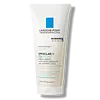What's inside
What's inside
 Key Ingredients
Key Ingredients

 Benefits
Benefits

 Concerns
Concerns

 Ingredients Side-by-side
Ingredients Side-by-side

Water
Skin ConditioningGlycerin
HumectantSodium Laureth Sulfate
CleansingPEG-200 Hydrogenated Glyceryl Palmate
CleansingCoco-Betaine
CleansingPolysorbate 20
EmulsifyingCitric Acid
BufferingPEG-7 Glyceryl Cocoate
EmulsifyingNiacinamide
SmoothingBixa Orellana Seed Extract
MaskingButyrospermum Parkii Butter
Skin ConditioningCocamide Mea
EmulsifyingGlycol Distearate
EmollientSodium Chloride
MaskingSodium Hydroxide
BufferingMannose
HumectantDisodium EDTA
Vitreoscilla Ferment
Skin ConditioningMaltodextrin
AbsorbentPolyquaternium-11
Acrylates Copolymer
Sodium Benzoate
MaskingParfum
MaskingWater, Glycerin, Sodium Laureth Sulfate, PEG-200 Hydrogenated Glyceryl Palmate, Coco-Betaine, Polysorbate 20, Citric Acid, PEG-7 Glyceryl Cocoate, Niacinamide, Bixa Orellana Seed Extract, Butyrospermum Parkii Butter, Cocamide Mea, Glycol Distearate, Sodium Chloride, Sodium Hydroxide, Mannose, Disodium EDTA, Vitreoscilla Ferment, Maltodextrin, Polyquaternium-11, Acrylates Copolymer, Sodium Benzoate, Parfum
Water
Skin ConditioningButylene Glycol
Humectant1,5-Pentanediol
SolventPEG-80 Glyceryl Cocoate
EmulsifyingPropylene Glycol
HumectantPEG-6 Caprylic/Capric Glycerides
EmulsifyingPolysorbate 20
EmulsifyingSodium Myreth Sulfate
CleansingSodium Lauroyl Glutamate
Chlorhexidine Digluconate
AntimicrobialPiroctone Olamine
PreservativeSuccinic Acid
BufferingHydroxypropyl Guar Hydroxypropyltrimonium Chloride
PEG-60 Almond Glycerides
EmulsifyingNordihydroguaiaretic Acid
AntioxidantOleanolic Acid
Skin ConditioningCaprylyl Glycol
EmollientLactic Acid
BufferingGlycerin
HumectantCarbomer
Emulsion StabilisingParfum
MaskingTrisodium Ethylenediamine Disuccinate
Water, Butylene Glycol, 1,5-Pentanediol, PEG-80 Glyceryl Cocoate, Propylene Glycol, PEG-6 Caprylic/Capric Glycerides, Polysorbate 20, Sodium Myreth Sulfate, Sodium Lauroyl Glutamate, Chlorhexidine Digluconate, Piroctone Olamine, Succinic Acid, Hydroxypropyl Guar Hydroxypropyltrimonium Chloride, PEG-60 Almond Glycerides, Nordihydroguaiaretic Acid, Oleanolic Acid, Caprylyl Glycol, Lactic Acid, Glycerin, Carbomer, Parfum, Trisodium Ethylenediamine Disuccinate
 Reviews
Reviews

Ingredients Explained
These ingredients are found in both products.
Ingredients higher up in an ingredient list are typically present in a larger amount.
Glycerin is already naturally found in your skin. It helps moisturize and protect your skin.
A study from 2016 found glycerin to be more effective as a humectant than AHAs and hyaluronic acid.
As a humectant, it helps the skin stay hydrated by pulling moisture to your skin. The low molecular weight of glycerin allows it to pull moisture into the deeper layers of your skin.
Hydrated skin improves your skin barrier; Your skin barrier helps protect against irritants and bacteria.
Glycerin has also been found to have antimicrobial and antiviral properties. Due to these properties, glycerin is often used in wound and burn treatments.
In cosmetics, glycerin is usually derived from plants such as soybean or palm. However, it can also be sourced from animals, such as tallow or animal fat.
This ingredient is organic, colorless, odorless, and non-toxic.
Glycerin is the name for this ingredient in American English. British English uses Glycerol/Glycerine.
Learn more about GlycerinParfum is a catch-all term for an ingredient or more that is used to give a scent to products.
Also called "fragrance", this ingredient can be a blend of hundreds of chemicals or plant oils. This means every product with "fragrance" or "parfum" in the ingredients list is a different mixture.
For instance, Habanolide is a proprietary trade name for a specific aroma chemical. When used as a fragrance ingredient in cosmetics, most aroma chemicals fall under the broad labeling category of “FRAGRANCE” or “PARFUM” according to EU and US regulations.
The term 'parfum' or 'fragrance' is not regulated in many countries. In many cases, it is up to the brand to define this term.
For instance, many brands choose to label themselves as "fragrance-free" because they are not using synthetic fragrances. However, their products may still contain ingredients such as essential oils that are considered a fragrance by INCI standards.
One example is Calendula flower extract. Calendula is an essential oil that still imparts a scent or 'fragrance'.
Depending on the blend, the ingredients in the mixture can cause allergies and sensitivities on the skin. Some ingredients that are known EU allergens include linalool and citronellol.
Parfum can also be used to mask or cover an unpleasant scent.
The bottom line is: not all fragrances/parfum/ingredients are created equally. If you are worried about fragrances, we recommend taking a closer look at an ingredient. And of course, we always recommend speaking with a professional.
Learn more about ParfumPolysorbate 20 is made by combining ethoxylation of sorbitan, ethylene oxide, and lauric acid. It is a mild cleansing agent, surfactant, and emulsifier.
As a surfactant, it helps collect dirt and oils for washing. Emulsifiers prevent oils and water from separating.
Polysorbate 20 also adds scent to a product. Since it is made using sorbitol, it has a sweet scent. Sorbitol can also be found in fruits such as apples and peaches.
The lauric acid used to create Polysorbate 20 is often derived from coconuts.
Polysorbate 20 may not be fungal acne safe.
Learn more about Polysorbate 20Water. It's the most common cosmetic ingredient of all. You'll usually see it at the top of ingredient lists, meaning that it makes up the largest part of the product.
So why is it so popular? Water most often acts as a solvent - this means that it helps dissolve other ingredients into the formulation.
You'll also recognize water as that liquid we all need to stay alive. If you see this, drink a glass of water. Stay hydrated!
Learn more about Water